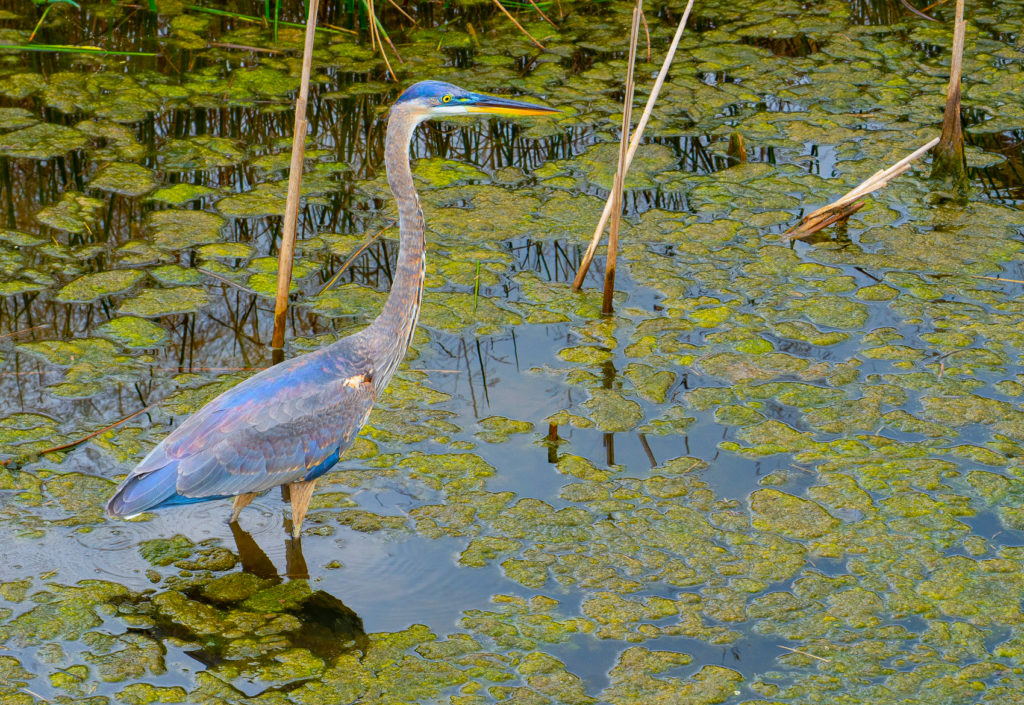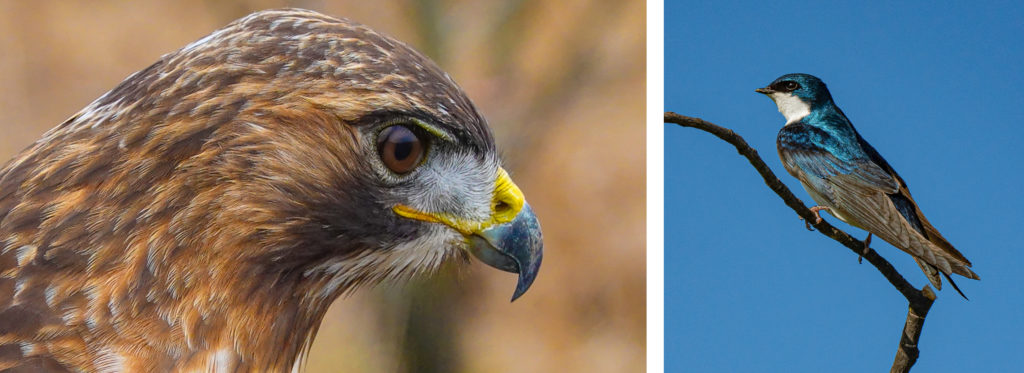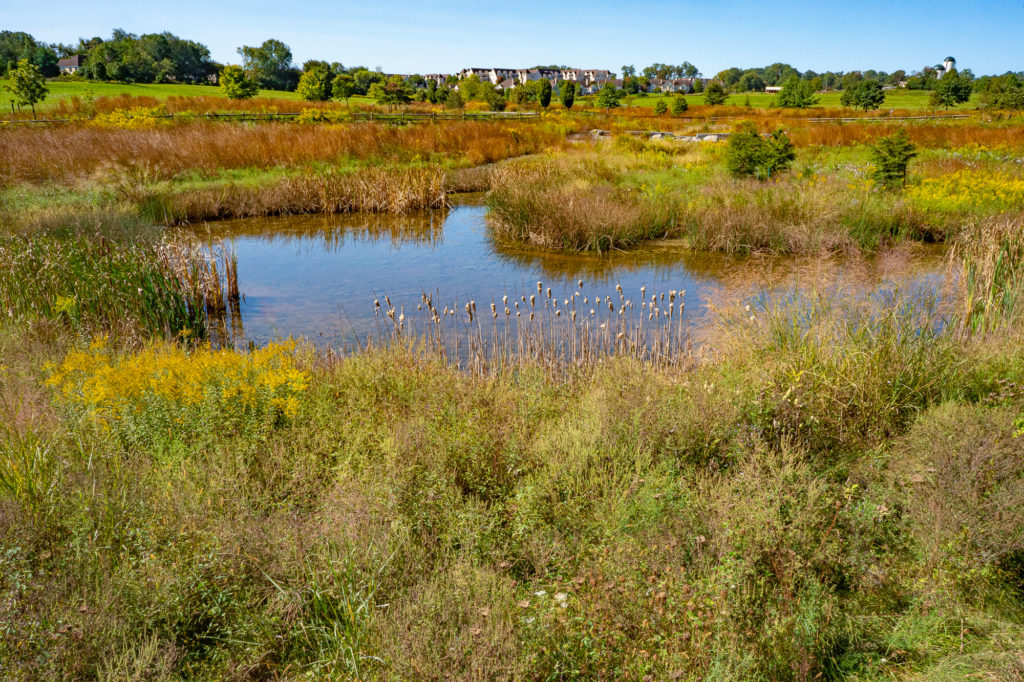A Place for the Birds and Bird Enthusiasts Preserved Land for Nature Lovers

Just north of The Hill at Whitemarsh lies the Dixon Meadow Preserve, an ecological gem that is a testament to what happens when you focus on preservation and conservation.
If you’re ever lucky enough to stroll through the Dixon Meadow Preserve with Kim Sheppard, President of the Whitemarsh Foundation; Paul Meyer, retired F. Otto Haas Executive Director of the Morris Arboretum and current Vice Chairman and Board Director of the Whitemarsh Foundation; Ruth Pfeffer, an avian expert and photographer; Bill Konstant, an international wildlife conservationist; and Glenn Mason, a wildlife photographer, my advice to you would be to listen intently.
If the combined 150+ years of experience isn’t enough to make your ears perk up, perhaps witnessing their excitement over spotting a great blue heron sitting quietly in the pond or pointing out where new flora will be planted come springtime will do the trick.
“We choose plants that will provide food and shelter for wildlife, but we’re also serving the people who come here and enjoy spending time in the environment,” says Paul. “Although the preserve is man-made, we aim to keep it very naturalistic—if it were just left to nature, it would become overrun and turn into a forest, disrupting the open space. So we’re very thoughtful about how we plant trees to create diversity of habitat.”
Rick Collier, one of the environmental planners who helped to bring the vision of the wildlife preserve to fruition in the early 2000s, explained that the initial concept was a mix between creating something that helped to control the water runoff while also honoring the role of the Whitemarsh Foundation as a steward of conservation.
“We wanted to develop a stormwater feature that doesn’t look like one,” says Rick. “We changed the flow of water, reducing the rate at which it flows through the area and moving it through a cleansing environment. The tree and plant diversity support the stormwater efforts and the biodiversity of the ecosystem.”
“What Rick and his partner, Dave Cavanaugh, did here was to create this really naturalistic, meandering, beautifully graded stormwater retention basin,” says Paul. “If you didn’t know it was man-made, you would think God did this! It was really designed to function as a natural system and look like a natural system.”

Maintaining the Dixon Meadow Preserve to look like a natural system requires regular management, but the result is remarkable: 14 acres of open land and a boardwalk that winds through the heart of the biodiversity. It’s become a haven for birders, walkers, wildlife enthusiasts, conservationists, and those who appreciate the flora and fauna that allow for such a dynamic gathering of animals, insects, and avian friends.
The sun is high in the sky as we stroll along the boardwalk, listening as Paul, Ruth, and Bill point out a variety of interesting facts:
The Kentucky coffeetree is a legume that has large pods and provides food for wildlife, even though it’s toxic for mammals.
Milkweed grows throughout the preserve, which provides food for caterpillars and helps protect them so they can become butterflies. Milkweed is the only host plant for Monarch butterflies; without it, they cannot survive.
Winterberry holly provides a richness of fruit for wildlife. Birds love eating it, and typically, they won’t strip the berries until January or February. When they eat the berries earlier in the season, they’re telling you that it’s going to be a long winter.
The group keeps walking, but Ruth touches my arm to signal me to stop walking and grabs her binoculars. Everyone notices, and a hush falls over the crowd, giving her more opportunity to listen to a bird singing.
“That’s a song sparrow!” she announces excitedly. With over 50 years of birding experience, Ruth has a well-trained ear and still gets giddy when she spots a bird. “This area brings so much joy to so many people,” she tells me as we pass a nesting box for Eastern bluebirds.
“Early ornithologists called them a ‘very civilized bird.’ They are cavity nesters, and the circumference to get in has to be a specific size for them. They build their nests inside, and if you come in the fall, you can see all the Eastern bluebirds teaching their young to get in and out of the boxes. They raise a couple of broods and they become a flock in the fall. Some of them take flight and some of them stay,” says Ruth.
The nesting boxes were installed to help repopulate the species, which Ruth tells me used to be all over the country but have been on the decline over the past few decades due to a variety of factors, including climate change. Ann Kent, a resident of The Hill at Whitemarsh and fellow avid birder, has helped to collect data from the nesting boxes as part of the Cornell University Nest Watch research program.

“I got into bird boxes years ago, and I helped start an international program to put up bird boxes on golf courses,” says Ann. “I’ve always loved nature, and I’ve served on the Whitemarsh Foundation committee since I arrived here. Our goal was always land preservation. The fact that it became the paradise that it is surprised everyone.”
It’s easy for bird enthusiast residents at The Hill (like Ann) to volunteer for the research program because the landscape of The Hill and of the preserve are integrated. There is a walking path that connects the two, and many residents have a great view of the preserve from their homes, making it something of an unofficial extension to the expansive property of The Hill. It’s not uncommon to often see residents out for some exercise or fresh air or taking their dogs for a walk through the area. It’s hard to appreciate one without the other, but the preserve is not an experience exclusive to residents of The Hill.
In addition to the foot traffic from Hill residents, Kim estimates that many thousands of people pass through the preserve throughout the year, especially when there are special bird sightings.
If you’re interested in planning your visit or learning more about the Whitemarsh Foundation, visit www.whitemarshfoundation.org
“On any given day, if there’s something to be seen, particularly in the morning, you will see crowds of people gathered around to look for rare birds,” she says. “We had a Midwestern rock wren here not long ago, which was the first time there was a sighting here in Pennsylvania, and people came in from Pittsburgh, Maryland, Ohio—all over—to see it.”
The Dixon Meadow Preserve has truly become a must-see destination for nature lovers from all over the country. As Bill and Glenn say, the preserve is “the jewel of the Wissahickon” and one of the neighborhood’s brightest hidden gems.